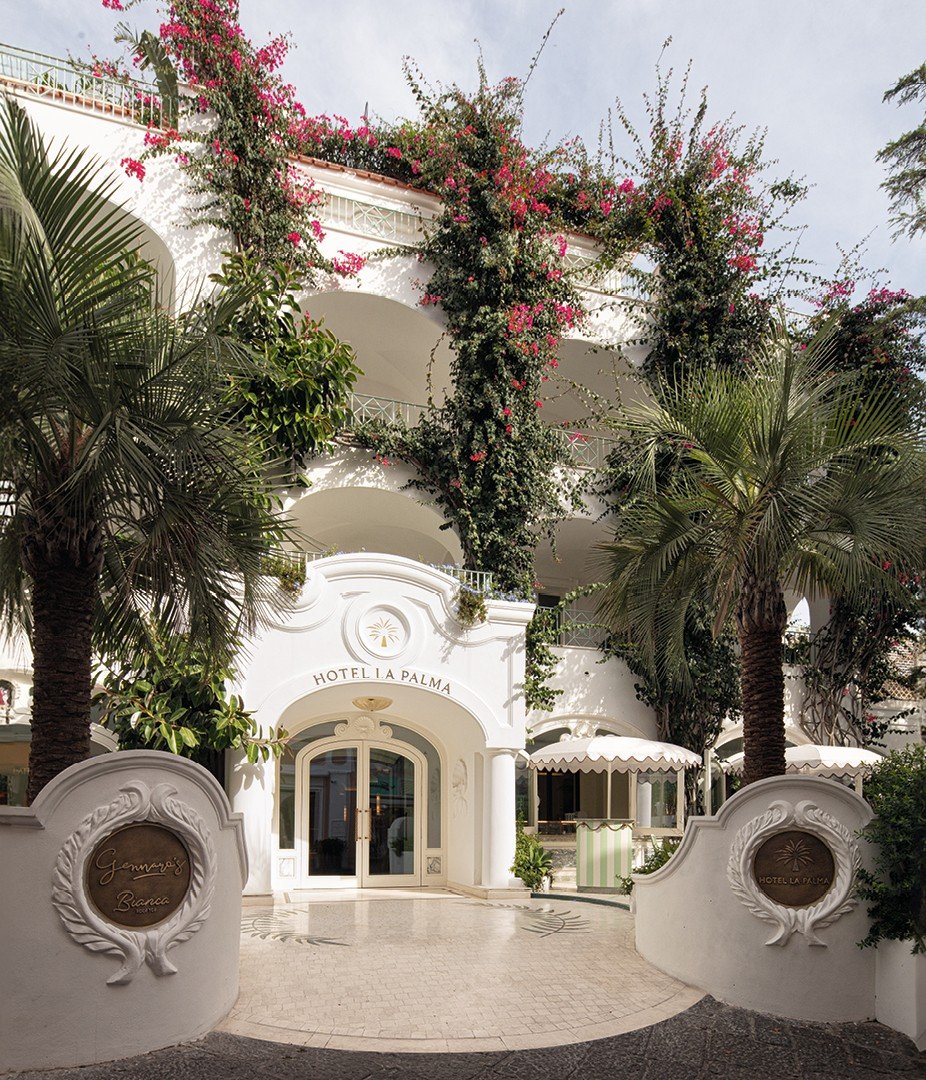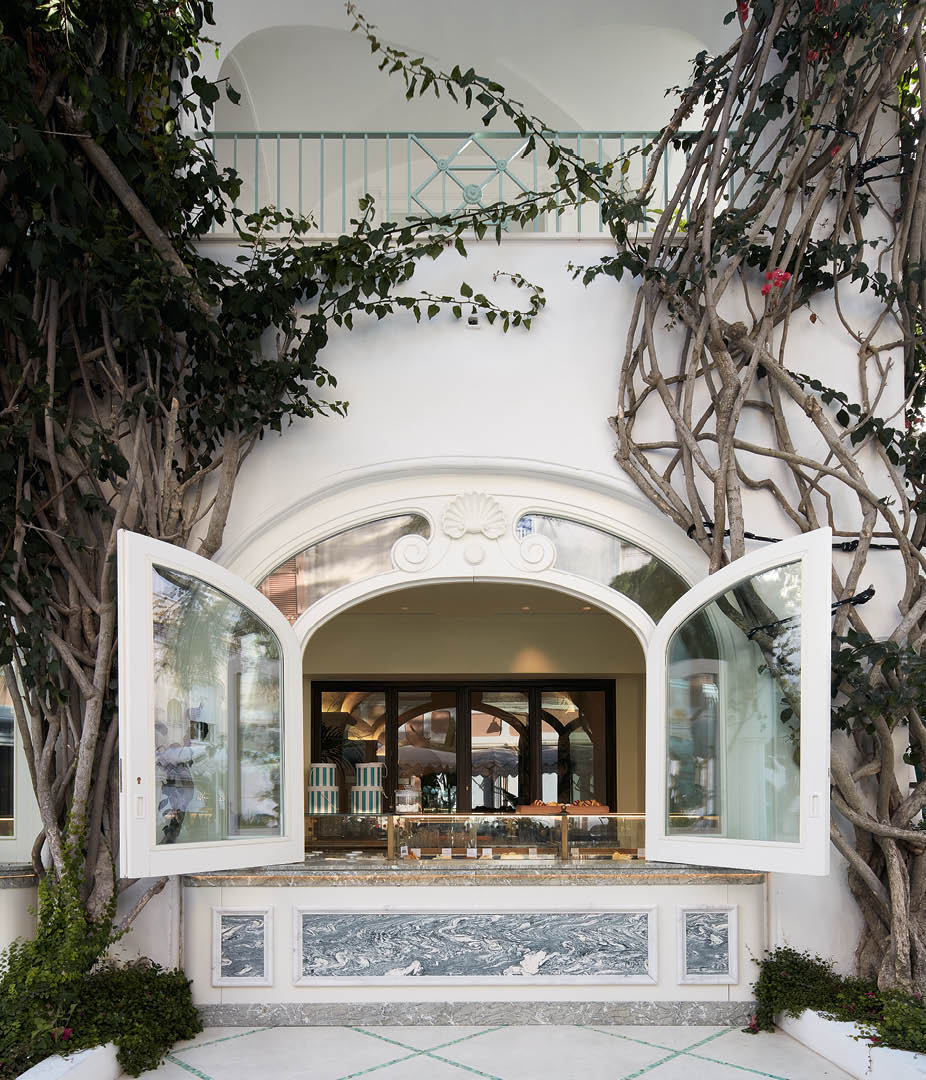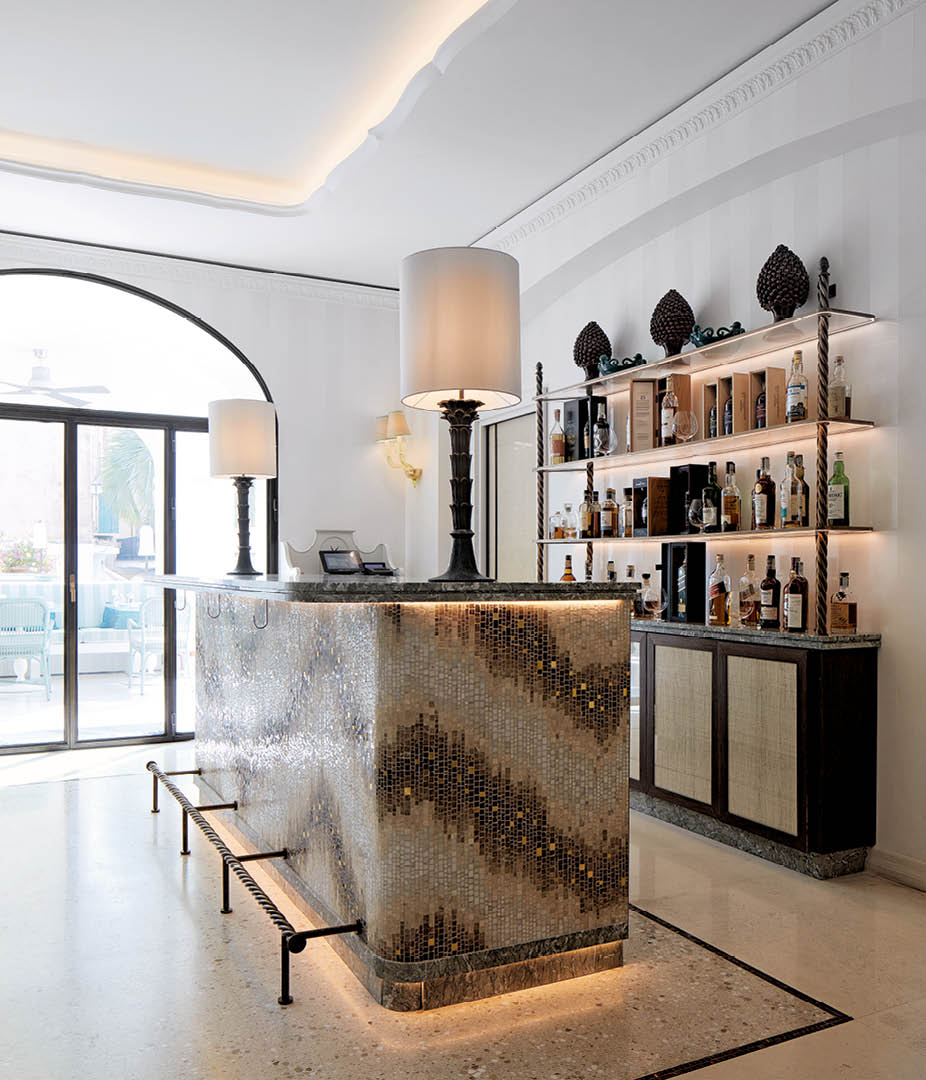
La Palma
- Category
- Resort
- Location
- Capri, NA, Italy
- Year
- 2023
- Architect
- Francis Sultana
- Builder
- Oetker Collection
Hotel La Palma is located in Capri, a few steps from the famous Piazzetta. A mythical place of Mediterranean summers, it has rediscovered the splendours of the past, thanks to the recent redesign curated by Francis Sultana.

Hotel La Palma is an exclusive and elegant Mediterranean retreat. The building, built in 1822, is located a few steps from the Piazzetta – an iconic place of Italian summers. The hotel reopened in 2023, after a renovation that lasted almost three years.
Francis Sultana, an interior designer who works on the border between design and art, designed the project for Oetker Collection, one of the largest hotel groups in the world. To ensure that the new hotel faithfully reflects the spirit of the place, everything has been tailor-made by Italian and local artisans.


Designed to be a cosy home away from home, the La Palma hotel expresses discreet luxury through obsessive attention to detail.

Francis Sultana is one of the world’s foremost interior and furniture designers – he is featured in Architectural Digest US magazine’s annual AD100, cited as one of Wallpaper’s Top 20 Interior Designers and listed on House & Garden and AD Italia’s Top 100. He is also the artistic director of the renowned David Gill Gallery of London, sits on the Victoria & Albert Museum’s Advisory Council, and has institutional roles in Serpentine Galleries and the Design Museum of London. Design and art are so intertwined in his life, that the ability to merge them in his interiors has become one of his peculiarities, as well as having a strong interest for artisanal skills and techniques. Hotel La Palma, Sultana’s first hotel project, stems from the designer’s love for Capri, one of his favorite holiday spots, an island that reminds him of his birthplace, Malta.
You recently renovated Hotel La Palma, the oldest hotel in Capri and your first ever hotel project. Where did you start from?
I’ve known Capri for more than 25 years, I’ve been going there every summer, so the most important thing was the inspiration it has given me. Thinking about the building and its historical references, I wanted to bring it back to its original narrative, complementing the architectural history with something up to date, restored and conserved for the future.
How would you describe Capri?
I grew up in Gozo, the small island off the coast of Malta, so I know very well how an island like Capri works, and that’s why I am very fond of it. Capri is unique, it is neither part of the mainland, nor of the Amalfi coast, even if it has the same influences. It is in its own bubble, it has always been a place of beauty that attracts people. It has its own way of dealing with things, its own way of survival. Even the people are very different: they look after themselves and their island in a way that is different from all the other islands around. It’s such a special place.
You said in an interview that: “an interior design project is successful when one is able to read the space”. What is the vocation of Hotel La Palma?
Hotel La Palma is located in the middle of Capri, near the Piazzetta, so it really lies at the core of what Capri represents. I wanted the hotel to look like a villa and feel like a home. In a way, my experience in designing homes shines through, but what is new is that with a hotel I have to please not just one family but all the different people who come every season, people from all over the world and Italians themselves. It’s been a very interesting and challenging way of decorating, also thinking about the historical context of the Italian style, and the Italian way of doing things. I wanted people to feel comfortable, and to feel that the place is appropriate. An appropriate, elegant hotel that blends in well with Capri, as if it has always been there.
La Palma is a luxury hotel: what does luxury means today?
I think the most successful luxury interiors today are low key and very sophisticated, which is actually the most difficult thing to achieve, because understated decoration can be very expensive, even if you wouldn’t say so by looking at it. But the quality is there, the design is there, and the history is there. It is the most difficult route to take when decorating nowadays. There are designers in every country who are very focused on this, and I am one of them. We are a small group with a very defined identity, style and point of view, and every project we do challenges us to excel.
You designed everything, from the furniture to small details: what is the role of craftsmanship in this project?
I designed maybe 90% of everything inside Hotel La Palma, which is a very high number, and I had this vision that it had to be made in Italy. My designs are good, but unless they’re made authentically, with the surrounding environment in mind, they are not strong. So craftsmanship is key. If a great jacket were made by a bad tailor, it would be a bad jacket, but if it were made by a good tailor, it would be a very beautiful jacket. It’s the same. Italy is a place where fashion and furniture design are especially strong, and it has a history of quality. I think this is why my work turned out beautifully.

